
A brigade is a major tactical military formation that typically comprises three to six battalions plus supporting elements. It is roughly equivalent to an enlarged or reinforced regiment. Two or more brigades may constitute a division.
The hackle is a clipped plume or short spray of coloured feathers that is attached to a military headdress, with different colours being associated with particular regiments.
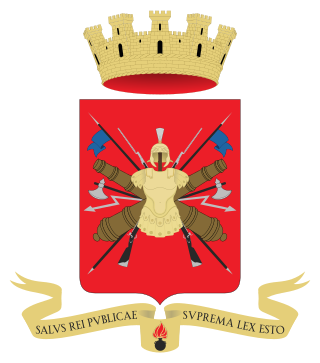
The Italian Army is the land force branch of the Italian Armed Forces. The army's history dates back to the Italian unification in the 1850s and 1860s. The army fought in colonial engagements in China, Libya, Northern Italy against the Austro-Hungarian Empire during World War I, Abyssinia before World War II and in World War II in Albania, Balkans, North Africa, the Soviet Union, and Italy itself. During the Cold War, the army prepared itself to defend against a Warsaw Pact invasion from the east. Since the end of the Cold War, the army has seen extensive peacekeeping service and combat in Afghanistan and Iraq. Its best-known combat vehicles are the Dardo infantry fighting vehicle, the Centauro tank destroyer and the Ariete tank and among its aircraft the Mangusta attack helicopter, recently deployed in UN missions. The headquarters of the Army General Staff are located in Rome opposite the Quirinal Palace, where the president of Italy resides. The army is an all-volunteer force of active-duty personnel.

Indian Peace Keeping Force (IPKF) was the Indian military contingent performing a peacekeeping operation in Sri Lanka between 1987 and 1990. It was formed under the mandate of the 1987 Indo-Sri Lankan Accord that aimed to end the Sri Lankan Civil War between Sri Lankan Tamil militant groups such as the Liberation Tigers of Tamil Eelam (LTTE) and the Sri Lankan military.

The Sri Lanka Army is the oldest and largest of the Sri Lanka Armed Forces. The army was officially established as the Ceylon Army in 1949, though the army traces its roots back in 1881 when Ceylon Light Infantry Volunteers was created; the army was renamed as the 'Sri Lanka Army' when Sri Lanka became a republic in 1972. In 2024, the Army had approximately 150,000 personnel.
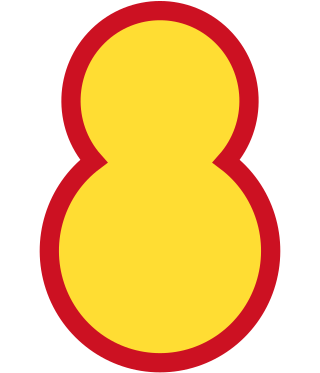
The 8th Maneuver Division, also known as Roly Poly Toy Division, is a military formation of the Republic of Korea Army and is unit is one of four divisions under the command of the VII Maneuver Corps. Before the unit was renamed on January 1, 2021, it was called the 8th Mechanized Infantry Division.

The Sri Lanka Armoured Corps (SLAC) provides the armour capability of the Sri Lanka Army, with vehicles such as the T-55AM2, and type 80/88 main battle tanks; the BMP infantry fighting vehicle; and the BTR-80, and WZ551 armoured personnel carriers. It comprises five regular armoured regiments, a volunteer regiment, and a regimental band. It has an independent Armoured Brigade and is headquartered at Rock House Army Camp, Colombo.
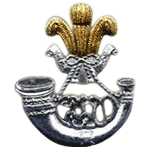
The Sri Lanka Light Infantry (SLLI) is the oldest regiment in the Sri Lanka Army and the oldest infantry regiment in the army. It is made up of sixteen regular battalions and nine volunteer battalions, and is headquartered at the Panagoda Cantonment, Panagoda.

The Sri Lanka Sinha Regiment (SLSR) is an infantry regiment of the Sri Lanka Army; it is the second oldest infantry regiment in the army.
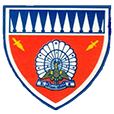
The Gemunu Watch (GW) ("King Dutugemunu's Own") is a infantry regiment of the Sri Lanka Army, formed with troops from the Ceylon Light Infantry and the Ceylon Sinha Regiment in 1962. It has been deployed in many major operations against the LTTE. It is made up of 14 regular units and 9 volunteer units. Headquartered at Kuruwita Army Camp, Ratnapura. It is named after one of the most famous Lankan Kings, King Dutugemunu.
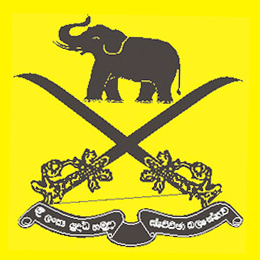
The Sri Lanka Army Volunteer Force (SLAVF) is the active-duty volunteer reserve force of the Sri Lanka Army. The SLAVF is separate from the Regular Force which consists of personal who are professional soldiers and its Regular Reserve, which comprises personal who have a mobilization obligation following their service in the regular army. The SLAVF consists of the volunteer force and the volunteer reserve; administration and recruitment of reserve personal is carried out by the Volunteer Force Headquarters in Shalawa, Kosgama which is headed by the Commandant of the Volunteer Force. It has a current strength of about 55,000 personnel. The SLAVF was known as the Ceylon Volunteer Force from 1949 to 1972 and the Sri Lanka Volunteer Force from 1972 to 1985.
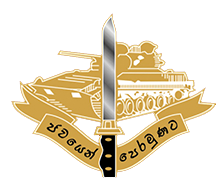
The Mechanized Infantry Regiment (MIR) is a mechanized infantry regiment of the Sri Lanka Army. It is made up of four regular battalions and a volunteer battalion. Establish in 2007 by Lt. Gen. Sarath Fonseka its battalions are equipped with Type 63 and WZ551 armoured personnel carriers make up the Mechanized Infantry Brigade. It is the youngest Infantry regiment of the Army.
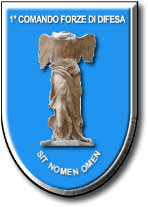
The V Army Corps was one of three corps the Italian Army fielded during the Cold War. Based in the regions of Veneto and Friuli-Venezia-Giulia the corps was the army's main combat force. The 5th Army Corps was arrayed close to the Yugoslavian border and tasked with meeting any Warsaw Pact forces that crossed the border. On the left flank of the corps the 4th Alpine Army Corps was tasked with blocking the Alpine passes and in the rear of the corps the 3rd Army Corps served as operational reserve. After the end of the Cold War the corps was reduced in size and on 1 October 1997 it became the 1st Defence Forces Command. In 2013 the COMFOD 1° was disbanded and its function and brigades taken over by the 20th Infantry Division Friuli in Florence.

The 21 Division is a division of the Sri Lanka Army. Established on 4 April 1988 as 2nd Division, the division is currently based in Anuradhapura in the North Central Province. The division is a part of Security Forces Headquarters – Wanni and has three brigades and seven battalions. The division is responsible for 7,100 square kilometres (2,741 sq mi) of territory.

The 54 Division is a division of the Sri Lanka Army. It was established in 1999 to garrison and defend the strategic Elephant Pass and was forced to withdraw north following the Second Battle of Elephant Pass in 2000, after which it was disbanded. The division was reestablished on 10 September 2010, the division is currently based in Thallady in the Northern Province. The division is a part of Security Forces Headquarters – Wanni and has three brigades and six battalions. Major General G.J.A.W Galagamage has been commander of the division since 28 August 2017. The division is responsible for 1,417 square kilometres (547 sq mi) of territory.

The 56 Division is a division of the Sri Lanka Army. Established on 17 October 1997, the division is currently based in Kokeliya in the Northern Province. The division is a part of Security Forces Headquarters – Wanni and has two brigades and six battalions. Brigadier D. A. R. Ranawaka has been commander of the division since 6 August 2012. The division is responsible for 830 square kilometres (320 sq mi) of territory.

The 65 Division is a division of the Sri Lanka Army. Established on 15 Dec 2008, the division was based in Alankulam near Thunukkai in the Northern Province. Today the division is a part of Security Forces Headquarters – Wanni and has three brigades and eight battalions.

The 66 Division is a division of the Sri Lanka Army. Established on 1 January 2009, the division is based in Pooneryn in the Northern Province, Sri Lanka. The division was a part of Security Forces Headquarters – Kilinochchi but now the division is part of Security Forces Headquarters – Mullaitivu and has three brigades and seven battalions.
Major General Priyanka Fernando, RWP, USP, is a former senior Sri Lanka Army officer. He has served as the Director General of General Staff (DGGS); General officer commanding (GOC), 58 Division; Commandant of the Ranaviru (veterans) Resource Centre; Director of Rehabilitation; and the Director of Real Estate and Quartering. He served as the Colonel of the Regiment of the Mechanized Infantry Regiment and was the Sri Lankan Minister Counsellor (Defence) in London.

















